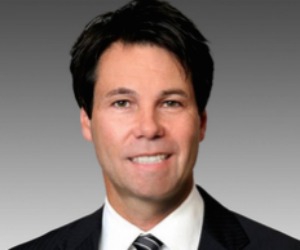
Ontario earmarks $2.3M for new low-back pain pilot project
Mari-Len De
Features Collaboration Profession Health Minister Dr. Erick Hoskins
Health Minister Dr. Erick Hoskins The Ontario government is expanding its low back pain strategy through a $2.3 million pilot project aimed at enabling primary care organizations to deliver timely, appropriate, high-quality low back pain services.
As part of the expansion of Ontario’s Low Back Pain Strategy, the two-year pilot project will build on efforts to provide better access to appropriate, cost-effective, patient-centred care.
Under the initiative, participating health care organizations will be able to provide additional hours for a range of allied health providers such as chiropractors, physiotherapists, occupational therapists, kinesiologists and registered massage therapists.
This recent announcement further fuels chiropractic’s role in the development of new primary health care models that focus on providing “the right care, at the right time, in the right place.”
“Improving the quality and delivery of treatment for low back pain can make a life-changing difference to thousands of people in the province,” said Dr. Eric Hoskins, Minister of Health and Long-Term Care.
The Ontario Chiropractic Association (OCA) welcomes this new initiative and sees it an “incredible opportunity” to increase the number of people seeing chiropractors for their health conditions.
Although low-back pain is only a portion of the health care chiropractors are able to provide, it is what the profession is best known for and it is what the government is looking for at the moment, said Bob Haig, chief executive officer of the OCA.
“We are filling that gap right now,” he said. “Over the last few years, the government and other players in the health-care system have recognized the valuable role that chiropractors play and the expertise that they have,” said Haig.
Since 2012, the Ontario government has launched a series of initiatives under its Low Back Pain Strategy, and in each of these initiatives, chiropractors have played a prominent role.
Among the organizations participating in this new pilot project include:
• Essex Court Nurse Practitioner-Led Clinic in Essex in partnership with City Centre Health Care in Windsor
• A partnership between family health teams in Mount Forest, East Wellington and Minto-Mapleton
• Couchiching Family Health Team in Orillia
• TAIBU Community Health Centre in Scarborough
• Shkagamik-Kwe Aboriginal Health Access Centre in Sudbury
• Belleville Nurse Practitioner-Led Clinic
• Centre du santé communautaire de l’Estrie
Through the project, these organizations will be able to provide to: provide faster, more accurate assessment of low back pain problems; use a more holistic approach to treating patients suffering from low back pain; educate patients on low back pain self-management techniques; and refer patient to an appropriate health-care provider as needed.
Since April 2012, Ontario has invested more than $4 million to improve the quality and availability of low back pain supports across the province.
Acute low back pain is a common health problem affecting more than half of all Ontarians over the course of their lifetime. For most people, getting an imaging test such as x-ray, CT scan or MRI will not help assess or treat low back pain, according to the ministry.
About 90 per cent of back pain is benign – that is, not caused by a serious underlying injury or disease.
Since the launch of the Ontario Low Back Pain Strategy in 2012, there has been an 18.5 per cent decrease in the number of patients being sent for unnecessary x-rays, CT scans or MRIs – resulting in savings of approximately $15 million, according to the ministry.
“The old model of dealing with low back pain – at a physician’s office – was largely based on referrals to medical specialists, and doing an awful lot of advanced imaging – MRIs, CT scans – which the evidence all says is not actually the best way to manage these patients. Almost 90 per cent of people who are referred to a specialist or to a surgeon for low back pain are not surgical candidates and they just end up back in their family doctor, anyway,” said Haig.
“The beauty of this model is it’s as far upstream as you can get, in other words, it’s as close to the patient’s first point of contact with the system as you can get.”
Print this page